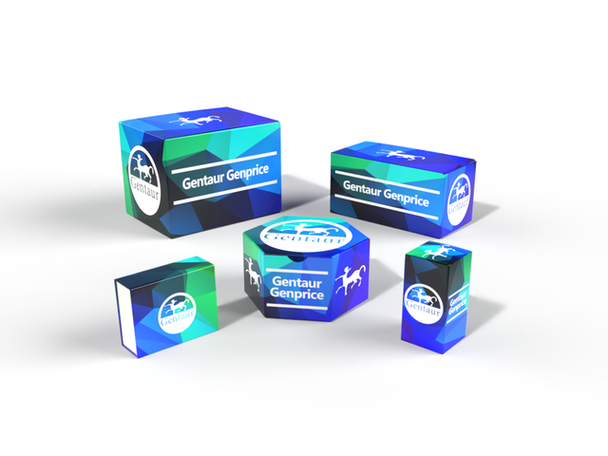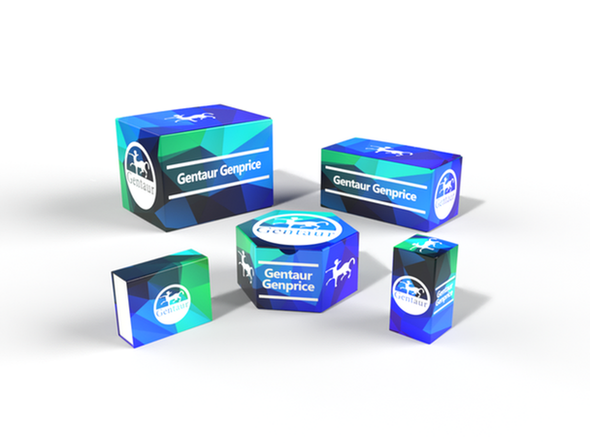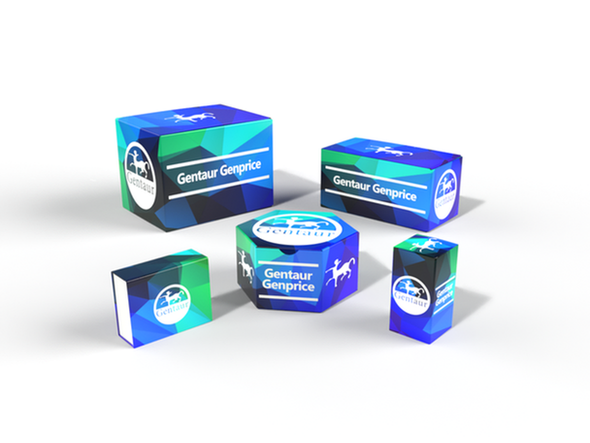749
Rat Anti-double stranded DNA (dsDNA) ELISA Kit | KTE100927
- SKU:
- 749-KTE100927
- Availability:
- Usually ships in 5 working days
Description
Rat Anti-double stranded DNA (dsDNA) ELISA Kit | KTE100927 | Gentaur UK, US & Europe Distribution
Application: This Rat Anti-double stranded DNA (dsDNA) ELISA Kit employs the competitive enzyme immunoassay technique. The microtiter plate provided in this kit has been pre-coated with an antibody specific to dsDNA. Standards or samples are then added to the appropriate microtiter plate wells with a Horseradish Peroxidase (HRP) -conjugated dsDNA and incubated. The competitive inhibition reaction is launched between with HRP labeled dsDNA and unlabeled dsDNA with the antibody. A substrate solution is added to the wells and the color develops in opposite to the amount of dsDNA in the sample. The color development is stopped and the intensity of the color is measured.
Detection Method: Colorimetric
Conjugate: N/A
Sample Type: Cell culture supernatants#Serum#Plasma#Other biological fluids
Assay Type: Multiple steps standard sandwich ELISA assay with a working time of 3-5 hours. It depends on the experience of the operation person.
Kit Component: • Rat Anti-double stranded DNA microplate
• Rat Anti-double stranded DNA standard
• Rat Anti-double stranded DNA detect antibody
• Streptavidin-HRP
• Standard diluent
• Assay buffer
• HRP substrate
• Stop solution
• Wash buffer
• Plate covers
Features & Benefits: Rat Anti-double stranded DNA (dsDNA) ELISA Kit has high sensitivity and excellent specificity for detection of Rat dsDNA. No significant cross-reactivity or interference between Rat dsDNA and analogues was observed.
Calibration Range: Please inquire
Limit Of Detection: Please inquire
Usage Note: • Do not mix components from different kit lots or use reagents beyond the kit expiration date.
• Allow all reagents to warm to room temperature for at least 30 minutes before opening.
• Pre-rinse the pipet tip with reagent, use fresh pipet tips for each sample, standard and reagent to avoid contamination.
• Unused wells must be kept desiccated at 4 °C in the sealed bag provided.
• Mix Thoroughly is very important for the result. It is recommended using low frequency oscillator or slight hand shaking every 10 minutes.
• It is recommended that all samples and standards be assayed in duplicate or triplicate.
Storage Instruction: The unopened kit should be stored at 2 - 8°C. After opening, please store refer to protocols.
Shipping: Gel pack with blue ice.
Precaution The product listed herein is for research use only and is not intended for use in human or clinical diagnosis. Suggested applications of our products are not recommendations to use our products in violation of any patent or as a license. We cannot be responsible for patent infringements or other violations that may occur with the use of this product.
Background: Antibodies against dsDNA are found during active phases of SLE. The amount of the serum concentration is positively correlated with the severity of the disease. Thus, detection of these autoantibodies is important for the diagnosis and the clinical monitoring of SLE. Consequently it has been established as 1 of the 11 ACR-criteria for the diagnosis of SLE. Most patients with SLE display IgG class antibodies against dsDNA. These autoantibodies are associated with lupus nephritis.Approximately 30% of the SLE patients develop IgA class anti-dsDNA antibodies, additionally. There have been suggestions that the presence of these IgA class anti-dsDNA antibodies may define a certain subset of SLE patients. Indeed studies demonstrated the association of this subclass with certain parameters of the disease activity.
Alternative Names: dsDNA
Search name: dsDNA
Tag: dsDNA






